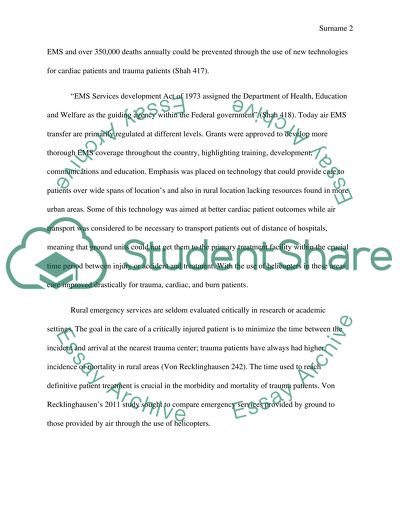Cite this document
(“Emergency medical services Research Paper Example | Topics and Well Written Essays - 1250 words”, n.d.)
Emergency medical services Research Paper Example | Topics and Well Written Essays - 1250 words. Retrieved from https://studentshare.org/health-sciences-medicine/1464814-emergency-medical-services
Emergency medical services Research Paper Example | Topics and Well Written Essays - 1250 words. Retrieved from https://studentshare.org/health-sciences-medicine/1464814-emergency-medical-services
(Emergency Medical Services Research Paper Example | Topics and Well Written Essays - 1250 Words)
Emergency Medical Services Research Paper Example | Topics and Well Written Essays - 1250 Words. https://studentshare.org/health-sciences-medicine/1464814-emergency-medical-services.
Emergency Medical Services Research Paper Example | Topics and Well Written Essays - 1250 Words. https://studentshare.org/health-sciences-medicine/1464814-emergency-medical-services.
“Emergency Medical Services Research Paper Example | Topics and Well Written Essays - 1250 Words”, n.d. https://studentshare.org/health-sciences-medicine/1464814-emergency-medical-services.


